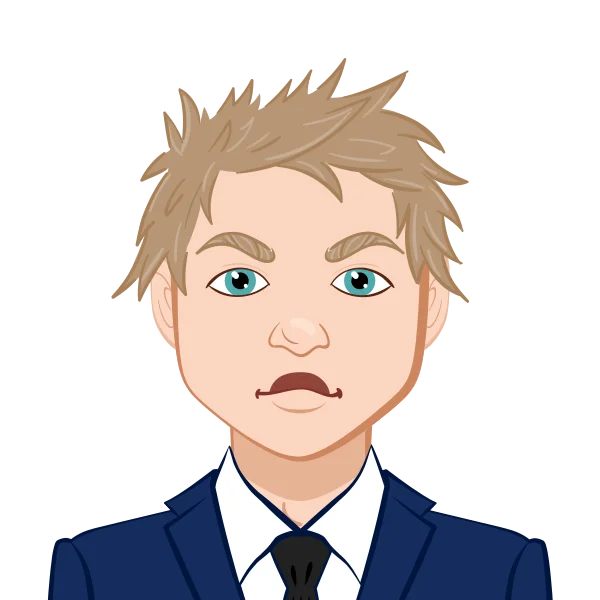Claim Your Discount Today
Get 10% off on all Statistics homework at statisticshomeworkhelp.com! Whether it’s Probability, Regression Analysis, or Hypothesis Testing, our experts are ready to help you excel. Don’t miss out—grab this offer today! Our dedicated team ensures accurate solutions and timely delivery, boosting your grades and confidence. Hurry, this limited-time discount won’t last forever!
We Accept
Explore Sample Regression and Correlation Homework
Want to see the quality of our work? Browse through sample homework completed by our statistics experts to get an idea of the thorough, well-structured solutions we provide. Our samples cover a range of topics, from basic to complex regression and correlation tasks, giving you confidence in choosing our services.
SPSS
Statistical Models
R Programming
Statistical Models
SPSS
Get Affordable Regression and Correlation Homework Help Services Online
At StatisticsHomeworkHelper.com, we are dedicated to offering top-quality assistance with Regression and Correlation homework at highly affordable prices. Our pricing model is tailored to the complexity of the homework, the deadline, and the required level of expertise, ensuring that all students can access our services regardless of their budget. With transparent and flexible pricing, we aim to deliver exceptional support at rates that are student-friendly. Explore our sample pricing table below to get an idea of the costs:
| Homework Complexity | Deadline | Price Range ($) |
|---|---|---|
| Basic | 7 days | $50 - $80 |
| Intermediate | 5 days | $70 - $100 |
| Advanced | 3 days | $90 - $130 |
| Complex | 2 days | $110 - $150 |
| Urgent | 24 hours | $130 - $180 |
- Regression and Correlation Homework Help
- Can I Pay Your Experts to Do My Regression and Correlation Homework on Any Topic?
- How Our Online Regression and Correlation Homework Help Service Works
- The Benefits of Seeking Help with Regression and Correlation Homework
- How Our Regression and Correlation Homework Helpers Handle Your Coursework with Precision
Regression and Correlation Homework Help
Regression and correlation are essential statistical techniques used to analyze the relationship between variables. Correlation measures the strength and direction of the association between two variables, indicating whether they move together or in opposite directions. It helps identify patterns such as positive, negative, or no correlation.
Regression analysis, on the other hand, goes further by modeling the relationship between dependent and independent variables. It allows you to predict the value of one variable based on another and determine the strength of this relationship. Commonly used in fields like economics, finance, and engineering, regression analysis is a powerful tool for understanding trends, making predictions, and identifying key drivers in complex data sets. Both methods are crucial for data-driven decision-making and problem-solving across various disciplines. Need regression and correlation homework help? Contact us right away.
Can I Pay Your Experts to Do My Regression and Correlation Homework on Any Topic?
At StatisticsHomeworkHelper.com, we specialize in offering thorough assistance with a wide range of topics related to regression and correlation analysis. If you're asking, "Can I pay someone to do my regression and correlation homework?" our expert team is here to guide you every step of the way. From performing detailed calculations to providing clear explanations, we ensure you receive top-quality support tailored to your academic needs. Let us handle your regression and correlation homework while you focus on mastering other aspects of your coursework.
- Linear Regression: Our experts provide step-by-step solutions to linear regression problems, ensuring you understand how to model relationships between variables and predict outcomes based on real data.
- Multiple Regression: We handle complex multiple regression homework, analyzing multiple predictors to offer comprehensive insights and explanations, helping you grasp the relationship between multiple independent variables and a dependent variable.
- Correlation Coefficients: From Pearson's correlation to Spearman's rank correlation, we offer in-depth guidance on calculating and interpreting correlation coefficients, explaining how to assess the strength and direction of relationships between variables.
- Logistic Regression: Our experts simplify logistic regression models, helping you understand how to model binary outcomes and conduct accurate predictive analysis, critical in fields like medicine, finance, and social sciences.
- Non-linear Regression: Tackling advanced topics like non-linear regression? We provide expert assistance with models that don’t fit traditional linear methods, ensuring you understand their application in real-world scenarios.
- Hypothesis Testing in Regression: We help you apply hypothesis testing to regression models, offering clear explanations on how to evaluate the significance of predictors and ensure robust results.
- Real-World Applications: Through engaging case studies and practical examples, we demonstrate the real-world applications of regression and correlation techniques, equipping you with analytical skills to solve data-driven problems.
- Emerging Trends in Statistical Analysis: Stay ahead with our insights into the latest trends and emerging techniques in regression and correlation analysis, preparing you to adapt to new challenges in statistics and data science.
With our professional statistics homework help service, completing your regression and correlation homework has never been easier. Simply reach out to us and say, "Do my regression and correlation homework," and let us help you achieve academic success in statistics.
How Our Online Regression and Correlation Homework Help Service Works
Accessing expert help with your Regression and Correlation homework has never been easier. Our efficient online platform ensures a smooth process, allowing you to get professional assistance in just three simple steps:
- Submit Your Homework Details: Start by providing us with the specifics of your Regression and Correlation homework. Simply fill out our easy-to-use order form, including your requirements, deadline, and any additional instructions.
- Get Paired with an Expert: After we receive your request, our team will carefully review your homework details and connect you with the most suitable statistics expert specializing in Regression and Correlation analysis.
- Receive High-Quality Solutions: Relax as our expert crafts a detailed and accurate solution to your Regression and Correlation homework, ensuring timely delivery and thorough explanations.
The Benefits of Seeking Help with Regression and Correlation Homework
Struggling with your Regression and Correlation homework? At Statistics Homework Helper, we provide numerous benefits to ensure your success in these critical topics. With our expert support, you can tackle challenging homework with confidence and achieve exceptional results. Here are five key benefits of choosing our regression and correlation homework help:
- PhD Qualified Experts: Our team consists of seasoned statisticians who specialize in regression and correlation analysis. They offer personalized assistance tailored to your specific homework requirements, helping you grasp complex concepts and improve your problem-solving skills.
- 24/7 Availability: We understand that deadlines can be stressful, so our services are available around the clock. Whether you need urgent help with data analysis, calculations, or interpretation, our team is ready to assist at any hour, providing prompt and reliable solutions.
- Affordable Rates: Quality help shouldn’t break the bank. We offer our top-tier services at student-friendly prices, ensuring that everyone can access expert assistance. Despite our affordable rates, we never compromise on the quality of our work.
- Grade Improvement Guarantee: Your academic performance matters to us. With our regression and correlation homework help, you can expect top-quality solutions that adhere to the highest academic standards. We’re committed to helping you secure excellent grades and a deeper understanding of the subject.
- Unlimited Revisions: We strive for perfection in every homework. If you’re not fully satisfied with the initial draft, we offer unlimited revisions to ensure that the final solution meets your expectations. Our experts will refine your work until you are completely happy, at no additional cost.
With these benefits and more, StatisticsHomeworkHelper.com is your trusted partner for premier help with regression and correlation homework. Don’t let difficult homework overwhelm you—get the expert help you need today and excel in your statistics coursework!
How Our Regression and Correlation Homework Helpers Handle Your Coursework with Precision
At StatisticsHomeworkHelper.com, our team of expert statisticians is committed to delivering top-tier Regression and Correlation homework help. We follow a meticulous process to ensure that each homework meets your academic needs and exceeds your expectations in every way.
- Extensive Data Collection: Our experts begin by gathering relevant datasets and conducting thorough research to ensure a deep understanding of your homework’s specific topic. We pull from a variety of credible sources to create a solid foundation for analysis.
- Custom Analysis for Accurate Results: Whether your homework requires simple linear regression, multiple regression, or correlation coefficient calculations, we tailor our approach to align with your specific guidelines. Each analysis is personalized to ensure accurate and reliable results based on the given data.
- Clear and Comprehensive Writing: Our statisticians are not only skilled at performing analyses, but they also excel in clear academic writing. We structure your homework in a logical, easy-to-follow format that explains complex statistical concepts in a clear, concise manner.
- Detailed Explanations of Concepts: We don’t just deliver solutions—we ensure you understand them. Our experts provide step-by-step explanations of the regression models or correlation analyses used, so you can grasp the underlying principles and apply them in future coursework.
- Rigorous Quality Checks: Before submitting the final work, we conduct in-depth quality reviews to ensure accuracy in calculations and adherence to academic standards. We also check for plagiarism to guarantee the originality of your homework.
- Unlimited Revisions for Perfection: We prioritize your satisfaction. If any changes are required, we offer unlimited revisions to ensure the completed homework aligns with your expectations and academic requirements.
With our dedicated Regression and Correlation homework helpers guiding you, you can be confident that your homework will be handled with professionalism and expertise. Choose StatisticsHomeworkHelper.com for outstanding assistance with all your regression and correlation homework needs!
Read Our Regression and Correlation Blog for Tips and Insights
Stay updated with useful insights and strategies for excelling in your Regression and Correlation homework through our informative blog. Our articles offer tips on handling various statistical topics, such as understanding regression models, correlation coefficients, and interpreting data analysis results. Dive into our blog to enhance your understanding of these essential topics.
What Students Are Saying About Our Reliable Services
Check out testimonials from students who have benefited from our Regression and Correlation homework help. The feedback highlights our commitment to delivering quality, timely solutions, and the expertise of our tutors. Find out why StatisticsHomeworkHelper.com is trusted by students worldwide for their statistics homework.
Hire Expert Regression and Correlation Homework Tutors
Our team of highly qualified statistics experts specializes in Regression and Correlation analysis. With advanced degrees and extensive experience in handling complex statistical tasks, our tutors provide tailored, accurate solutions for your homework. Whether you need help with simple linear regression, multiple regression analysis, or correlation interpretation, our experts guide you step-by-step, ensuring clarity and academic success in every task.
Dr. Chloe Evans
PhD in Statistical Analysis
🇬🇧 United Kingdom
Dr. Chloe Evans, with a PhD in Statistical Analysis from Simon Fraser University, has over 12 years of experience and has completed over 675 homework. Her profound knowledge and hands-on experience in statistical modeling and analysis make her an invaluable resource. Dr. Evans is dedicated to providing precise and effective solutions tailored to each student’s needs.
MR. Ankit Patel
Master’s in Applied Statistics
🇮🇳 India
MR. Ankit Patel earned his Master’s in Applied Statistics from the Indian Institute of Technology, Roorkee. Over the past 10 years, he has completed over 500 homework, bringing a wealth of experience to his role. MR. Patel’s expertise in practical and theoretical aspects of statistics ensures that students receive comprehensive and accurate assistance.
Professor Reuben O'Connor
PhD in Statistics
🇬🇧 United Kingdom
Professor Reuben O'Connor holds a PhD in Statistics from the University of Leicester and has a robust track record with over 400 completed homework. With 15 years in academia, his extensive knowledge covers various statistical methods and applications. Professor O'Connor is known for his meticulous approach and commitment to delivering high-quality, reliable solutions.
Dr. Yumi Nakamura
PhD in Statistical Science
🇦🇺 Australia
Dr. Yumi Nakamura, with a PhD in Statistical Science from Kyushu University, has over 15 years of experience in statistical modeling. She has completed more than 350 homework, showcasing her ability to handle a wide range of complex problems. Dr. Nakamura’s deep expertise and dedication ensure that each project is tackled with precision and insightful analysis.

Dr. Ava Smith
master’s degree in Applied Statistics
🇺🇸 United States
Dr. Ava Smith, hailing from the USA, is an accomplished statistician with a focus on advanced regression and correlation analysis. She earned her Ph.D. in Statistics from Stanford University and has completed over 950 homework. Dr. Smith's expertise includes a range of regression techniques and correlation methods, and she is dedicated to helping students achieve academic success through thorough, high-quality assistance.

Professor Daniel Clarke
Ph.D. in Statistics
🇦🇺 Australia
From Australia, Professor Daniel Clarke brings a wealth of knowledge to our team with his background in statistics and data analysis. With a Ph.D. in Statistics from the Australian National University, he has handled over 800 homework. His expertise lies in providing comprehensive solutions and explanations for various regression models and correlation techniques, ensuring clarity and precision.
.webp)
Dr. Jessica Martin
Master’s degree in Applied Statistics
🇨🇦 Canada
Dr. Jessica Martin is a leading statistician from Canada with extensive experience in handling Regression and Correlation homework. She holds a Master’s degree in Applied Statistics from the University of Toronto and has successfully completed more than 600 homework. Dr. Martin is known for her meticulous approach and ability to simplify complex statistical concepts, making them accessible to students at all levels.

Dr. Liam Williams
Ph.D. in Statistics
🇬🇧 United Kingdom
Based in the UK, Dr. Liam Williams is a seasoned expert in statistics with a focus on Regression and Correlation analysis. He holds a Ph.D. in Statistics from the University of Cambridge and has completed over 750 homework. Dr. Williams combines his academic knowledge with practical experience to provide detailed and insightful solutions for complex statistical problems. His approach ensures that students not only get accurate results but also gain a deeper understanding of the concepts involved.
.webp)
Dr. Ramon McDonell
Ph.D. in Statistics
🇦🇺 Australia
Dr. Ramon McDonell is an experienced statistician with a PhD from the University of Sydney. With over 500 completed homework in Generalized Linear Modeling, he excels in both theoretical and applied statistics. Dr. O'Connor’s expertise extends to complex modeling techniques and software applications, providing comprehensive support for students’ academic needs.
.webp)
Dr. Aisha Ibrahim
Ph.D. in Statistics
🇬🇧 United Kingdom
Dr. Aisha Ibrahim holds a PhD in Statistics from the University of Malaya and has extensive experience in teaching and research. She has completed around 700 Generalized Linear Modeling homework, focusing on ensuring clarity and precision in statistical analysis. Her approach combines rigorous methodology with practical insights to help students excel in their coursework.
.webp)
Dr. James Bennett
PhD in Applied Mathematics
🇨🇦 Canada
Dr. James Bennett is a data scientist with a PhD in Applied Mathematics from Cape Breton. With over 600 completed Generalized Linear Modeling homework, he specializes in applying advanced statistical techniques to real-world problems. His background in both academia and industry allows him to provide thorough and practical solutions tailored to students' needs.
.webp)
Dr. Jeanine Woods
Ph.D. in Statistics
🇺🇸 United States
Dr. Jeanine Woods holds a PhD in Statistics from the University of Western Illinois and has over a decade of experience in data analysis and statistical modeling. She has completed over 800 Generalized Linear Modeling homework, offering expertise in both theoretical and practical aspects of the subject. Dr. Clarke is well-versed in various statistical software and methodologies, ensuring accurate and insightful results for complex homework.
.webp)
Dr. Oliver James
PhD in Statistics
🇬🇧 United Kingdom
Dr. Oliver James earned his BSc in Mathematics from the University of Warwick. With over 1,600 completed homework and 10 years of experience, he excels in delivering insightful and practical solutions in predictive regression modeling.
.webp)
Ms. Priya Patel
Master’s degree in Applied Statistics
🇬🇧 United Kingdom
Ms. Priya Patel holds a Master’s degree in Applied Statistics from the University of Warwick. With more than 850 completed homework and 9 years of teaching experience, she focuses on making complex regression models accessible and understandable.
.webp)
Professor Mark Thompson
MSc in Statistics
🇨🇦 Canada
Professor Mark Thompson earned his MSc in Statistics from the University of Toronto. He has completed over 1,200 homework and has been teaching for 14 years. His expertise lies in bridging theoretical concepts with practical applications to enhance student understanding.

Dr. Lisa Bennett
PhD in Data Science
🇺🇸 United States
Dr. Lisa Bennett holds a PhD in Data Science from Stanford University. With over 900 completed homework, she has more than 11 years of experience in academia and research. Her specialty includes complex predictive modeling techniques and providing clear, actionable insights for students.
.webp)
Mr. Rajesh Iyer
Master’s in Statistics
🇬🇧 United Kingdom
Mr. Iyer holds a Master’s in Statistics from University of St Mark & St John. He has successfully completed over 320 homework tasks. With 7 years of experience, his practical knowledge of real-world applications of regression makes him a favorite among students seeking clear, concise solutions.
.webp)
Dr. Mei-Ling Zhang
Ph.D. in Mathematics
🇨🇳 China
Dr. Zhang earned her Ph.D. in Mathematics from Xi’an Jiaotong University and has over 12 years of experience in statistical research and homework assistance. With more than 380 completed homework, Dr. Zhang is adept at simplifying complex concepts and delivering top-quality work on tight deadlines.
.webp)
Professor Daniel Ainsley
Ph.D. in Applied Statistics
🇬🇧 United Kingdom
A distinguished professor with a Ph.D. in Applied Statistics from University of St Mark & St John, Professor Ainsley has guided over 520 students to success. He specializes in crafting accurate regression models and providing step-by-step solutions for students tackling challenging homework.

Dr. Evelyn Harper
Ph.D. in Statistics
🇺🇸 United States
With a Ph.D. in Statistics from The College of Wooster, Dr. Harper has over 10 years of experience in regression analysis. She has completed more than 450 homework with precision and depth, helping students excel academically. Dr. Harper’s expertise spans various fields, particularly in linear and multiple regression topics.
Related Topics
Frequently Asked Questions
Got questions about our Regression and Correlation homework help? Visit our FAQs section for answers to common queries regarding pricing, homework submission, and more. If you can’t find what you’re looking for, don’t hesitate to reach out to our 24/7 customer support team via live chat for immediate assistance.









